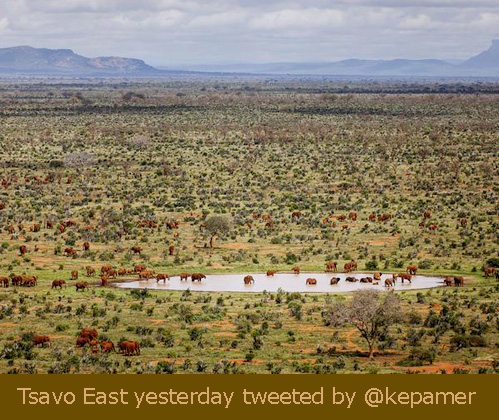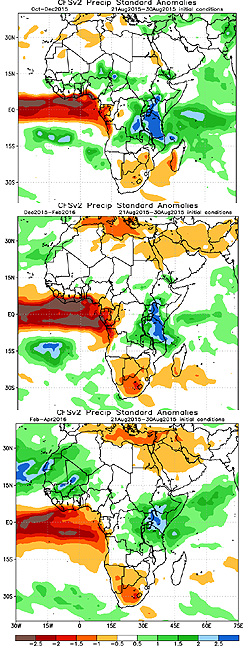 El-Nino’s coming! This means I’m carefully reviewing all the safari itineraries for next year.
El-Nino’s coming! This means I’m carefully reviewing all the safari itineraries for next year.
We’ve known that El-Nino was on its way, but the extent of it is only now being understood better. For safari guides like me, it’s going to be a challenge.
El-Nino effects different places differently. In my home in the Midwest of the U.S., temperatures will be mild and there will be lots less snow than normal.

On the California coasts and the south of the country, heavy rains … some which have already begun.
And that’s the prediction for East Africa where most of my safaris occur. The chart to the right was taken yesterday from the Climate Prediction Center of NOAA.
It shows the “precipitation anomaly” for three-month periods, starting from the top: Sep-Nov; Dec-Feb; and Feb-Apr. The bluer the shading, the greater the added precipitation expected.
Heavy rain is generally good for the animals. It just causes us guides some transport difficulties.
I realize, now, for example, that my penchant for traveling into the backside of Lake Manyara National Park is likely going to be impossible, as there are two river washes likely to be too high.
It means that multiple vehicle safaris only will be allowed into off-road areas of the NCAA, where black cotton soil, some quicksand and marsh turf, could become saturated. We space our vehicles out a bit further from one another so that multiple vehicles don’t get stuck at the same time in the same place.
On the other hand, there should be some impressively good news for the Kenyan portion of the my safaris, including Samburu, the Mara and Tsavo East.
These normally dry areas will likely get some water. In fact as shown by the picture above presumably taken in the last week, the rains have already greened up Tsavo East, a good month or two before normal.
That’s good. It will increase the survivability of animal births, pretty up the veld and reduce the horrible dust we normally have to endure in these areas.
So don’t change your plans! Just make sure that your safari operator is prepared! In fact, it’s usually been in years of unusually high rains that I’ve had the best experiences with the Great Migration!